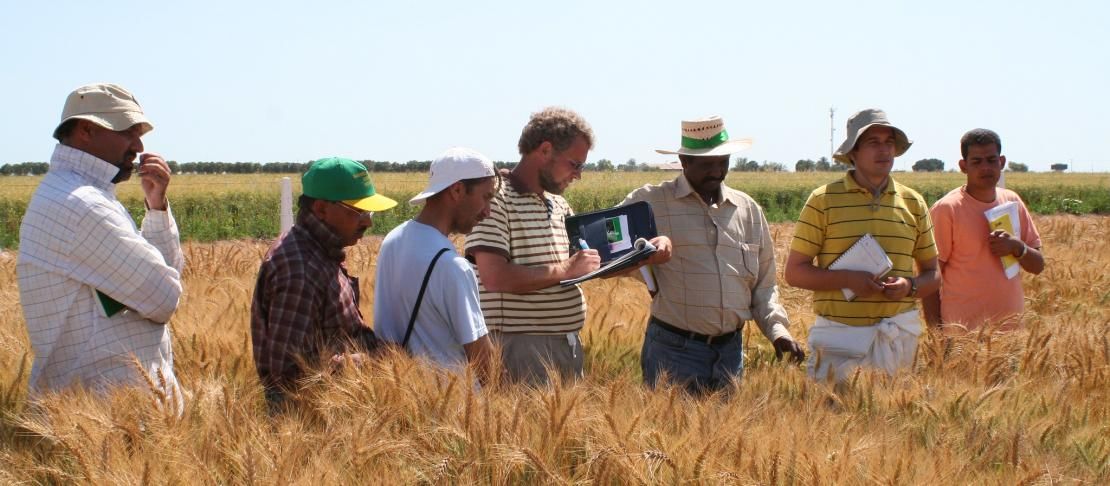A future for farming in the dry lands: smart solutions for climate change

by Clare Pedrick
Climate smart technologies can raise agricultural productivity, reduce rural communities’ vulnerability to weather extremes and cushion people from the impacts of food price volatility. The approach holds out special hope for dry lands, according to experts meeting in Doha, Qatar, to discuss the future of agriculture and food security in these countries.
Changing climate patterns will affect people farming in all ecosystems. But those living in dry areas will face more acute challenges. Countries already suffering from high poverty levels due to poor land and water availability are being hard hit by climate change, with erratic rainfall, more frequent droughts, extreme temperatures, shifting climatic zones and the arrival of new crop pests and diseases.
“We now face the additional challenge of climate change,” said Prof. Thomas Rosswall, chairman of the Independent Science Panel for the CGIAR Research Program on Climate Change Agriculture and Food Security (CCAFS). “The increased variation in rainfall and decrease in the total amount will dramatically affect production in the dry lands.”
Approaches to help buffer the effects of climate change on farmers range from simple solutions to high-tech options. Climate smart technologies currently being developed and trialed by CGIAR research centers and other organizations include work on shade agriculture, soil carbon sequestration, early warning systems, rotational grazing and flexible water storage options.
Experts meeting at the International Conference on Food Security in Dry Lands on Nov 14-15 said it was important that techniques were tailored to local conditions and backed up by policy, technical and financial support.
When carefully managed, climate smart initiatives can produce tangible benefits to rural communities and the land they depend on, making it more resilient when faced with climate swings. Promising technologies to combat this unpredictable situation include crop varieties adapted to perform well under climate change factors, technology tools, devices for farmers and systems for delivering targeted timing and doses of fertilizer and irrigation.
“Science-based agricultural technologies are a real force for increasing food security,” said Dr. Mahmoud Solh, Director General of the International Center for Agricultural Research in the Dry Areas (ICARDA).
Some examples of climate-smart farming
In Niger, the planting of 200 million nitrogen-fixing trees such as Acacia Senegal and Acacia seyal has resulted in the transformation of five million hectares of once infertile land. The initiative has increased crop yields and fodder availability, benefiting 2.5 million farmers. Trees increase the carbon stored in the landscape, mitigating climate change.
Groups of ‘lead farmers’ in Tunisia are being linked by mobile phone to crop and weather monitoring systems that issue alerts when irrigation is needed. The information can then be relayed to other producers.
In seven countries across North and sub-Saharan Africa, new approaches tested by national research and extension systems with ICARDA has produced a 22% increase in wheat yields for Egypt and a 58% increase in Sudan – based on actual farmer experiences (not trials). Techniques include the use of different planting methods, high yielding varieties, improved water management and integrated pest management.
In this approach, transferring technology to farmers is crucial to success and the partners have used three models for tech-transfer to suit different national and regional needs and styles. – lead farmer, ‘satellite’, and farmer field schools.
Prof. Rosswall commented that many useful technologies exist, but often they remain on the shelves. The challenge needed, he said, is to have ways to validate them, to see what works best where.
Public and private funding will be key to the rapid implementation of climate smart agriculture in drylands. More attention must be devoted to quantifying benefits from climate-smart agriculture, providing the evidence for scaling up, the meeting heard.
“Applying climate smart agriculture in the dry lands is going to require a great deal more attention in the future,” said Dominic Waughray, Senior Director of the World Economic Forum.
Clare Pedrick is a journalist specializing in agriculture, rural development and the environment. She is reporting from The International Conference on Food Security in Dry Lands (FSDL) held in Doha, Qatar from 14 to 15 November 2012. Read more blogs from the conference.
Are you interested in safeguarding our food system in a changing climate? Then be sure to register for Forest Day (2 December) and Agriculture, Landscapes and Livelihoods Day (3 December) in Doha, and follow #ALLForest on Twitter!